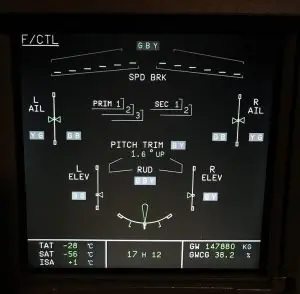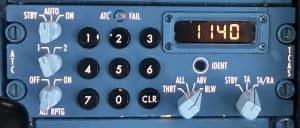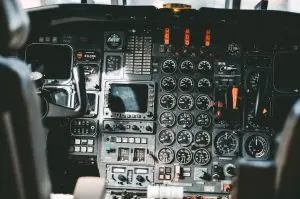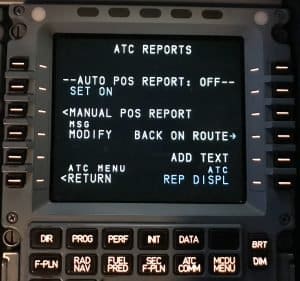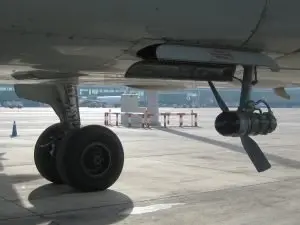The aircraft’s technical logbook (referred to as the “tech log”) is a folder carried on each aircraft that contains maintenance and other technical information for that specific aircraft.
The tech log provides an up to date (and official) record of the aircraft.
Prior to each departure the tech log is reviewed before being signed off as legally acceptable to the captain.
Pilots will most often come across the term “INOP” (or “inoperative”) in the aircraft technical logbook (“tech log”) which will indicate a an aircraft system (or part of a system) is not functioning.
Any aircraft systems (or partial systems) that are found to be “INOP” will be recorded in the tech log. Prior to departure the pilots will have to ensure either the system is repaired, or dispatch is allowed in accordance with the Minimum Equipment List (MEL).
Find out how pilots use the MEL to dispatch with some aircraft systems not working.
Table of Contents
What is an aircraft Technical Logbook, or “Tech Log”?
The aircraft “tech log” is a folder that is unique to each aircraft and contains details of the amount of fuel on board, hydraulic and oil levels, flight times and any aircraft defects that were experienced during the flight.
Prior to the flight the crew will review the tech log. Firstly they will check the aircraft registration on the front of the tech log matches the aircraft registration – with some airlines having hundreds of aircraft its important to make sure you’re looking at the right aircraft!
Sections of the Aircraft Tech Log
The tech log contains a number of sections – some require more scrutiny than others. For example, the radio licence will be reviewed on the first flight of the day to check correct registration and that its in date, whereas the flight records section will be updated each flight.
Although referred to as a “logbook”, it’s often more like a folder with each section divided by a tab.
The sections of a tech log include:
- Aircraft Certificates (Airworthiness, Radio Licence, Noise, Registration, Liquor Licence etc.)
- Deferred Defects Section
- Aircraft Defects Section
- Flight Attendant/Cabin Crew Section
- Dent and Buckle Chart
- Flight Records Section
Aircraft Certificates
The tech log contains important certificates which are legally required to be on board. These certificates will vary depending on the operation but will include:
Airworthiness Certificate
The Certificate of Airworthiness (also know as a “C of A”) is a certificate issued by the State of Registration of the aircraft and confirms that the aircraft is safe to fly and and conforms to its Type Design.
Radio Station Licence
Although a Radio Station Licence is not required for U.S. registered aircraft flying in the U.S., it is required for those aircraft that operate outside of the U.S.
Noise Certificate
A Noise Certificate is a document that is required to be carried on board the aircraft that states the standards that the aircraft meets with regard to the environmental impact of aircraft noise.
Certificate of Registration
A Certificate of Registration is a legal document required to be carried on board that reflects the aircraft registration (“tail number”) and country of registration.
Bar Licence/Liquor Licence
An important document to keep your passengers happy!
Note: the above is an example of required documents and will vary from State to State.
The crew will review the “Deferred Defects” section of the technical log which will include details on any inoperative equipment the aircraft is currently “carrying” and the relevant MEL information which allow the crew to check the required MEL operations and engineering procedures, any limits on the operation, the length of time the system may be INOP etc.
Deferred Defects Section
This section will detail any defects that the aircraft is operating with when it has been dispatched in accordance with the Minimum Equipment List (MEL). It allows the crew to check the reference for that particular MEL entry where they can see any limits imposed by the defect, any maintenance action required to be carried out, and any operating procedures the crew have to follow.
Aircraft Defects Section
This section of the technical log is where the pilots will log any systems or instruments that have become inoperative during the flight. They will include as much detail as possible about when the defect occurred, any relevant ECAM or EICAS warnings, or any other pertinent information.
Learn about EICAS and ECAM monitoring systems on modern aircraft.
Flight Attendant/Cabin Crew Section
This section is used to record non-safety items in the cabin that need maintenance. Examples would include inoperative equipment such as boilers or ovens, wear and tear in the cabin etc.
Anything related to safety such as First Aid Kits (FAKs) that have been used in flight, missing life jackets or damaged safety signs have to be entered in the main defects section of the tech log.
Dent and Buckle Chart
Unfortunately things bump into aircraft. And sometimes, aircraft bump into things.
This chart is a diagram of the aircraft showing all dents on the aircraft (and there’s usually quite a few!). On the walk-around if you notice any dent or buckle this is where you will check if it has already been recorded (together with any maintenance action carried out by engineering).
If you spot a new dent then it will have to be reported to the mechanic. Even what looks like a small, innocuous bit of damage can have serious repercussions (for example weakening the aircraft structure, or interfering with the airflow around the aircraft probes).
Flight Records Section
A flight record is carried out for each sector the aircraft flies. Times will be logged here – both “block times” (from when the aircraft is pushed back to when it arrives at the gate), and “flight time” (the time from take-off to landing).
Any fluid uplifts such as engine oil or hydraulic fluid will be recorded here, together with a reference for any maintenance action carried out on the aircraft.
Fuel uplift details will be recorded here – the amount of fuel in the tanks prior to refuelling; the amount of fuel in gallons or litres uplifted; the Specific Gravity (“SG”) of the fuel; and the total fuel on board.
Lastly, on this page is a section for the captains signature – by signing this they are certifying the aircraft meets the relevant safety requirements, there is sufficient fuel on board and the aircraft is safe for flight.

How is the Tech Log used at the end of the flight?
On arrival at the gate, once the aircraft is shutdown and the shutdown checklist is complete the captain will complete the Tech Log for that sector.
They will record the flight times, engine oil and fuel levels on arrival and any defects encountered during the flight.
The mechanic will review the Tech Log and deal with any defects that have been reported by the crew.
Tech Log: Further Reading
Humorous Tech Log Entries b737.org.uk
Aircraft Technical Log – aircraftengineer.info
Electronic Technical Logbook at Swiss Intl. Airlines – aircraftit.com
Electronic Technical Logbook – Aviation Today
If you found this article interesting please take 5 seconds to share this on your favorite social media. Thanks so much, I really appreciate it! [email protected]
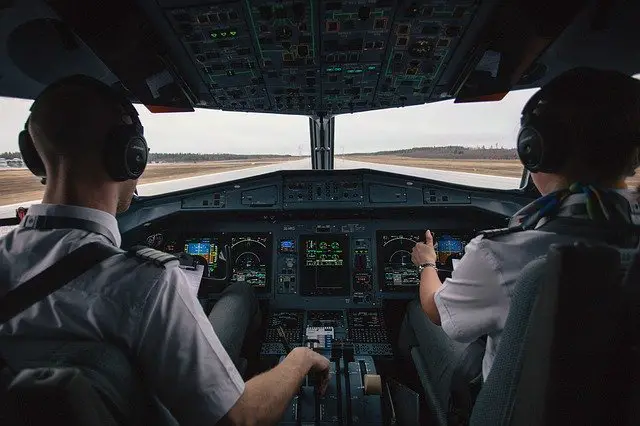
Pete has been flying aircraft for the last 20 years. He has flown everything from light piston aircraft up to heavy jets as both First Officer and Captain. He’s currently enjoying life flying the Airbus A330 for a major international airline.

